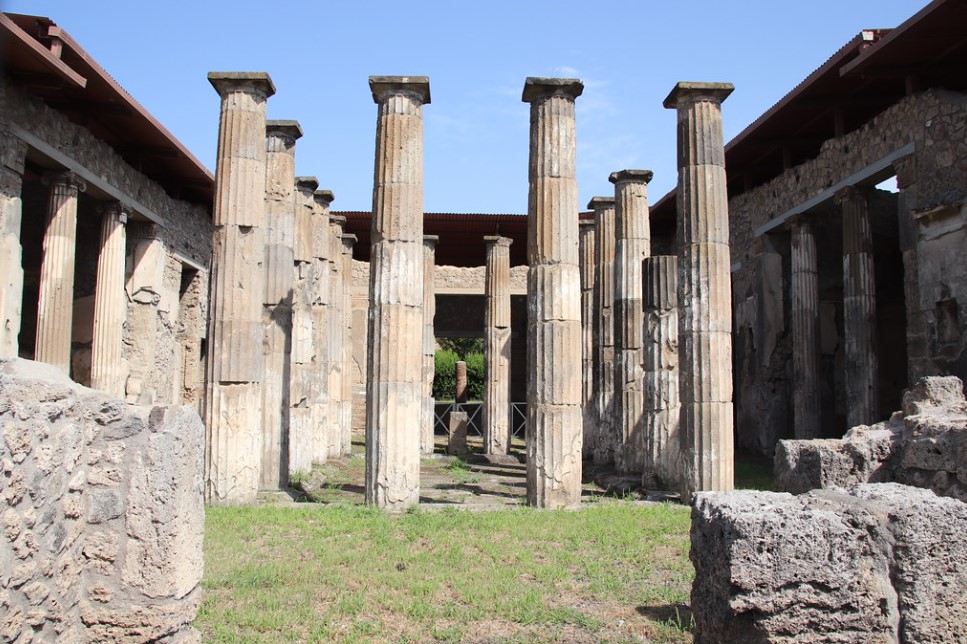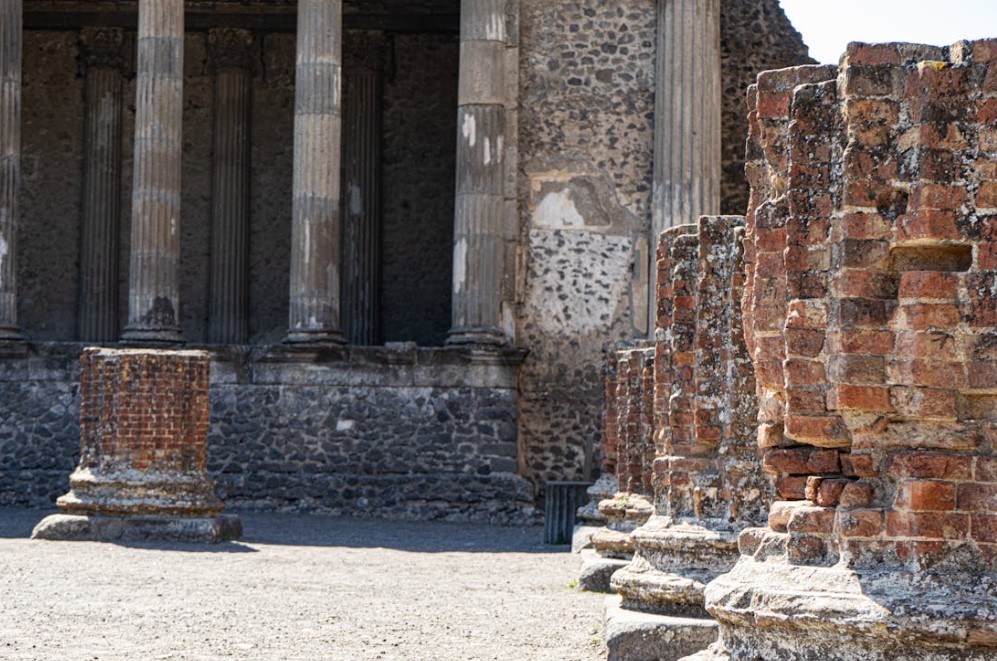Pompeii Ruins
Nestled at the foot of Mount Vesuvius in Italy’s Campania region, the ancient city of Pompeii is a haunting testament to the power of nature and the resilience of history. Buried under layers of ash and pumice during the catastrophic eruption of Vesuvius in AD 79, Pompeii was frozen in time, preserving a vivid snapshot of Roman life. Rediscovered in the 16th century and excavated extensively since 1748, this UNESCO World Heritage Site offers an unparalleled glimpse into the daily routines, culture, and architecture of a bustling Roman city. Spanning 163 acres, with 66 hectares unearthed, Pompeii attracts millions of visitors annually, drawn to its well-preserved ruins, intricate mosaics, and poignant human casts. This article explores the historical significance, key attractions, and practical tips for visiting Pompeii, revealing why it remains one of the world’s most captivating archaeological sites.
Historical Context
Origins and Growth
Pompeii’s roots trace back to the 7th century BC, when it was founded by the Oscans, an Italic people. Strategically located near the Sarno River and the Bay of Naples, it became a thriving trade hub under Greek and Etruscan influence before falling under Roman control in the 3rd century BC. By the 1st century AD, Pompeii was a prosperous city of approximately 11,000 to 20,000 residents, known for its vibrant economy, driven by agriculture, wine production, and commerce. Its diverse population included wealthy elites, merchants, artisans, and enslaved individuals, reflecting the social complexity of Roman society. The city boasted sophisticated urban planning, with a grid-like street layout, public buildings, and private homes that showcased Roman engineering and aesthetics.
The Eruption of Vesuvius
On August 24, AD 79 (though some evidence suggests October), Mount Vesuvius erupted with devastating force, unleashing a pyroclastic surge that buried Pompeii under up to six meters of volcanic material. The eruption killed thousands, entombing residents in ash as they fled or sought shelter. Pliny the Younger, an eyewitness, documented the disaster in letters, describing a sky darkened by ash and a sea choked with debris. The rapid burial preserved buildings, artifacts, and even organic matter, creating an extraordinary archaeological record. Pompeii lay forgotten for centuries, its rediscovery in 1599 during canal construction sparking curiosity, though systematic excavations began only in the 18th century under the Bourbon kings.

Archaeological Significance
Urban Layout and Public Spaces
Pompeii’s ruins reveal a meticulously planned city with a wealth of public and private spaces. The Forum, the civic and religious heart, was surrounded by key structures like the Basilica (a law court and marketplace), the Temple of Apollo, and the Temple of Jupiter. The Macellum, a covered market, and the Eumachia Building, likely a wool trade center, highlight Pompeii’s commercial vibrancy. The city’s two theaters—the Large Theatre, seating 5,000, and the Odeon for smaller performances—hosted plays and concerts, while the Amphitheatre, one of the oldest surviving Roman arenas, staged gladiatorial contests for up to 20,000 spectators. The Stabian Baths and Forum Baths demonstrate advanced engineering, with heated floors and intricate mosaics, offering insight into Roman hygiene and social life.
Private Homes and Art
Pompeii’s residential areas are equally compelling, showcasing the opulence of the elite and the simplicity of modest households. The House of the Faun, one of the largest villas, features the famous Alexander Mosaic, depicting a battle scene, and a bronze faun statue. The Villa of the Mysteries, just outside the city walls, is renowned for its vivid frescoes illustrating a Dionysian initiation rite, offering clues about Roman religious practices. The House of the Vettii, owned by freedmen brothers, boasts erotic frescoes and a garden peristyle, reflecting social mobility. Smaller homes, like the House of the Tragic Poet with its “Cave Canem” (Beware of the Dog) mosaic, reveal everyday life. These residences, adorned with frescoes, mosaics, and sculptures, showcase Roman artistry and domestic culture.
Everyday Life and Artifacts
Pompeii’s preservation extends to mundane details, making it a treasure trove for historians. Bakeries with carbonized loaves, taverns with food counters, and laundries with urine vats illustrate daily routines. Graffiti, ranging from political slogans to love poems, covers walls, offering a voice to ordinary citizens. The Lupanar, a brothel, features explicit frescoes and cramped rooms, shedding light on Roman sexuality. Artifacts like jewelry, surgical tools, and cooking utensils, displayed in the Naples National Archaeological Museum, complement the ruins. The plaster casts of victims, created by pouring plaster into cavities left by decomposed bodies, are profoundly moving, capturing final moments of despair and embrace.
Visiting Pompeii
Getting There and Tickets
Pompeii is easily accessible from Naples (25 minutes) or Sorrento (30 minutes) via the Circumvesuviana train, stopping at Pompeii Scavi-Villa dei Misteri. Tickets cost €16, with free entry for under-18s and reduced rates for EU citizens aged 18–25. Guided tours (€15–€20) or audio guides (€8) enhance the experience, providing context for the sprawling site. The Pompeii Artebus, a shuttle service, connects key areas, though most visitors explore on foot. Visiting in spring (March–May) or fall (September–November) avoids summer heat and crowds. A full visit takes 3–4 hours, though a comprehensive tour may require a day.
Key Sites and Tips
Must-see sites include the Forum, House of the Faun, Villa of the Mysteries, Amphitheatre, and Lupanar. The Antiquarium, a museum near the Forum, displays artifacts and casts, offering an introduction to the site. Wear comfortable shoes for the uneven cobblestone streets, and bring water, sunscreen, and a hat, as shade is limited. Restrooms and a cafeteria are available near the Forum, but bringing snacks is advisable. Recent restorations, funded by the Great Pompeii Project, have opened new areas like the House of the Cryptoporticus, showcasing vibrant frescoes. Combining a visit with nearby Herculaneum, which offers better-preserved wooden structures, or the Vesuvius crater provides a fuller picture of the region’s history.
Conservation Challenges
Pompeii faces ongoing preservation challenges due to weathering, tourism pressure, and past neglect. The Great Pompeii Project, launched in 2012 with EU funding, has stabilized structures, restored artworks, and improved visitor facilities. However, issues like water damage and vandalism persist, prompting calls for sustainable tourism practices. Visitors are urged to respect rules, such as not touching frescoes or removing artifacts, to ensure Pompeii’s longevity.

Cultural and Modern Impact
Pompeii’s influence extends beyond archaeology, inspiring literature, art, and film. Novels like Robert Harris’s Pompeii and exhibitions, such as the British Museum’s 2013 show, highlight its cultural resonance. The site has shaped modern understandings of Roman urban life, influencing reconstructions in historical dramas. On platforms like X, visitors share awe at Pompeii’s scale and detail, with posts noting the eerie beauty of the casts and the Forum’s grandeur. Recent discoveries, like a 2023 fresco of a pizza-like dish, fuel public fascination, underscoring Pompeii’s ability to surprise.
Conclusion
Pompeii is more than an archaeological site; it’s a portal to the Roman world, preserving the vibrancy and tragedy of a lost city. From the Forum’s grandeur to the intimate details of homes and graffiti, it offers a profound connection to the past. The eruption of Vesuvius, while devastating, gifted humanity an unparalleled record of antiquity. Visiting Pompeii is a journey through time, blending awe, reflection, and discovery. Whether standing in the Amphitheatre or gazing at a victim’s cast, travelers are reminded of life’s fragility and history’s enduring power. Pompeii remains a must-visit, inviting all to uncover its timeless stories.
